Irksome Barnacles
The CEF, Pill-boxes and the Victoria Cross
Pill-boxes were annoying obstacles and the cause of considerable struggles on the Western Front. In areas where the water table was near to the surface it was best to build above ground defences rather than dig in. The ground these fortifications commanded, before them and between them, was laced with the blood of many souls whose last visions were perhaps of the sparks that flew from these concrete nests. Rough and gray, these concrete irksome barnacles, anchored to the earth, poured from their openings their bite. Here the German Army’s machine guns dwelled singing their rapid fire, staccato articulation, at the approach of any assaulting force.
Soldiers of the Canadian Expeditionary Force often encountered these concrete menaces and near Passchendaele, four Canadian soldiers were awarded the Victoria Cross for engagements against these positions. The recipients were:
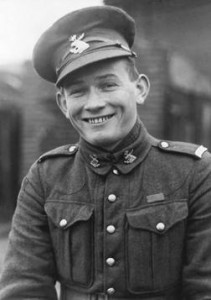
T.W. Holmes V.C.
Private Thomas William Holmes
4th Canadian Mounted Rifles
Wallemonen-Bellevue line of pill-boxes, near Passchendaele, Belgium, 26 October 1917
(Supplement to the London Gazette 11 January 1918, page 724)
For most conspicuous bravery and resource when the right flank of our attack was held up by heavy machine-gun and rifle fire from a “pill-box” strong point. Heavy casualties were producing a critical situation when Pte. Holmes, on his own initiative and single-handed, ran forward and threw two bombs, killing and wounding the crews of two machine guns. He then returned to his comrades, secured another bomb, and again rushed forward alone under heavy fire and threw the bomb into the entrance of the “pill-box” causing the nineteen occupants to surrender.
By this act of valour at a very critical moment Pte. Holmes undoubtedly cleared the way for the advance of our troops and saved the lives of many of his comrades.
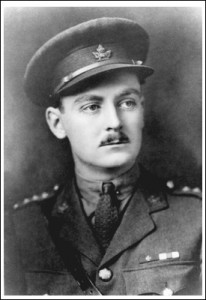
C.P.J. O’Kelly V.C., M.C.
Lieutenant (Acting Captain) Christopher Patrick John O’Kelly MC
52nd Canadian Infantry Battalion
Southwest of Passchendaele, Belgium, 26 October 1917
(Supplement to the London Gazette 15 November 1918, page 722)
For most conspicuous bravery in an action in which he led his company with extraordinary skill and determination.
After the original attack had failed and two companies of his unit had launched a new attack, Capt. O’Kelly advanced his command over 1,000 yards under heavy fire without any artillery barrage, took the enemy positions on the crest of the hill by storm, and then personally organised and led a series of attacks against “Pill-boxes,” his company alone capturing six of them with 100 prisoners and 10 machine guns.
Later on in the afternoon, under the leadership of this gallant officer, his company repelled a strong counter-attack, taking more prisoners, and subsequently during the night captured a hostile raiding party consisting of one officer, 10 men and a machine gun.
The whole of these achievements were chiefly due to the magnificent courage, daring and ability of Capt. O’Kelly.
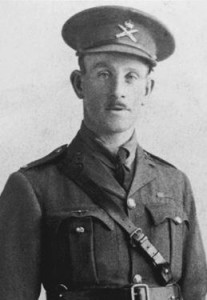
H. McKenzie V.C., D.C.M.
Lieutenant Hugh McKenzie DCM
Late Canadian Machine Gun Corps
7th Canadian Machine Gun Company attached Princess Patricia’s Canadian Light Infantry
Meetscheele Spur, near Passchendaele, Belgium, 30 October 1917. Posthumous award.
(Supplement to the London Gazette 13 February 1918, pages 2003/2004)
For most conspicuous bravery and leading when in charge of a section of four machine guns accompanying the infantry in an attack.
Seeing that all the officers and most of the non-commissioned officers of an infantry company had become casualties, and that the men were hesitating before a nest of enemy machine guns, which were on commanding ground and causing them severe casualties, he handed over command of his guns to an N.C.O., rallied the infantry, organised an attack, and captured the strong point.
Finding that the position was swept by machine-gun fire from a “pill-box” which dominated all the ground over which the troops were advancing, Lt. Mackenzie made a reconnaissance and detailed flanking and frontal attacking parties which captured the “pill-box,” he himself being killed while leading the frontal attack.
By his valour and leadership this gallant officer ensured the capture of these strong points and so saved the lives of many men and enabled the objectives to be attained.
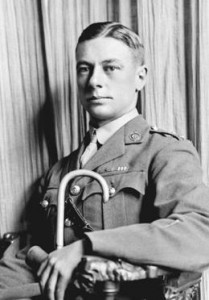
G.H. Mullin V.C., M.M.
Sergeant George Harry Mullin M.M.
Princess Patricia’s Canadian Light Infantry
Passchendaele, Belgium, 30 October 1917
(Supplement to the London Gazette 11 January 1918, page 723)
For most conspicuous bravery in attack, when single-handed he captured a commanding “Pill-box ” which had withstood the heavy bombardment and was causing heavy casualties to our forces and holding up the attack. He rushed a sniper’s post in front, destroyed the garrison with bombs, and, crawling on to the top of the ” Pill-box,” he shot the two machine-gunners with his revolver. Sjt. Mullin then rushed to another entrance and compelled the garrison of ten to surrender.
His gallantry and fearlessness were witnessed by many, and, although rapid fire was directed upon him, and his clothes riddled by bullets, he never, faltered- in his purpose and he not only helped to save the situation, but also indirectly saved many lives.
DID YOU KNOW?
Ever searching for interesting titles for these writings, it was while reading through Peter Oldham’s book, Pill Boxes on the Western Front that I happened upon a title. In a description of the two well-known German pill-boxes located within Tyne Cot Cemetery, southwest of Passchendaele, I learned that after their capture these concrete nests were named Irksome and The Barnacle.
George Harry Mullin V.C., M.M. was an American-born recipient of the Victoria Cross who came to Canada at the age of two. A that time, his parents relocated the family to Moosomin, Saskatchewan. George was born at Portland, Oregon, August 15, 1892 and became one of four American-born soldiers of the Canadian Expeditionary Force who were awarded the Victoria Cross.
A fifth Canadian, also of the 3rd Canadian Division, was also awarded the Victoria Cross for his engagement with a pill-box located in France.
Lieutenant Charles Smith Rutherford MC MM
5th Canadian Mounted Rifles
Monchy-le-Preux, France, 26 August 1918
(Supplement to the London Gazette 11 January 1918, page 13472)
For most conspicuous bravery, initiative and devotion to duty. When in command, of an assaulting party Lt. Rutherford found himself a considerable distance ahead of his men, and at the same moment observed a fully armed strong enemy party outside a “Pill Box” ahead of him. He beckoned to them with his revolver to come to him, in return they waved him to come to them. This he boldly did, and informed them that they were prisoners. This fact an enemy officer disputed and invited Lt. Rutherford to enter the “Pill Box,” an invitation he discreetly declined. By masterly bluff, however, he persuaded the enemy that they were surrounded, and the whole party of 45, including two officers and three machine guns, surrendered to him.
Subsequently he induced the enemy officer to stop the fire of an enemy machine-gun close by, and Lt. Rutherford took advantage of the opportunity to hasten the advance of his men. to his support.
Lt. Rutherford then observed that the right, assaulting party was held up by heavy machine-gun fire from another “Pill Box.” Indicating an objective to the remainder of his party he attacked the “Pill Box ” with a Lewis gun section and captured a further 35 prisoners with machine guns, thus enabling the party to continue their advance.
The bold and gallant action of this officer contributed very materially to the- capture of the main objective and was a wonderful inspiration to all ranks in pressing home the attack on a very strong position.

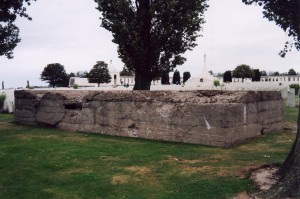
Comments